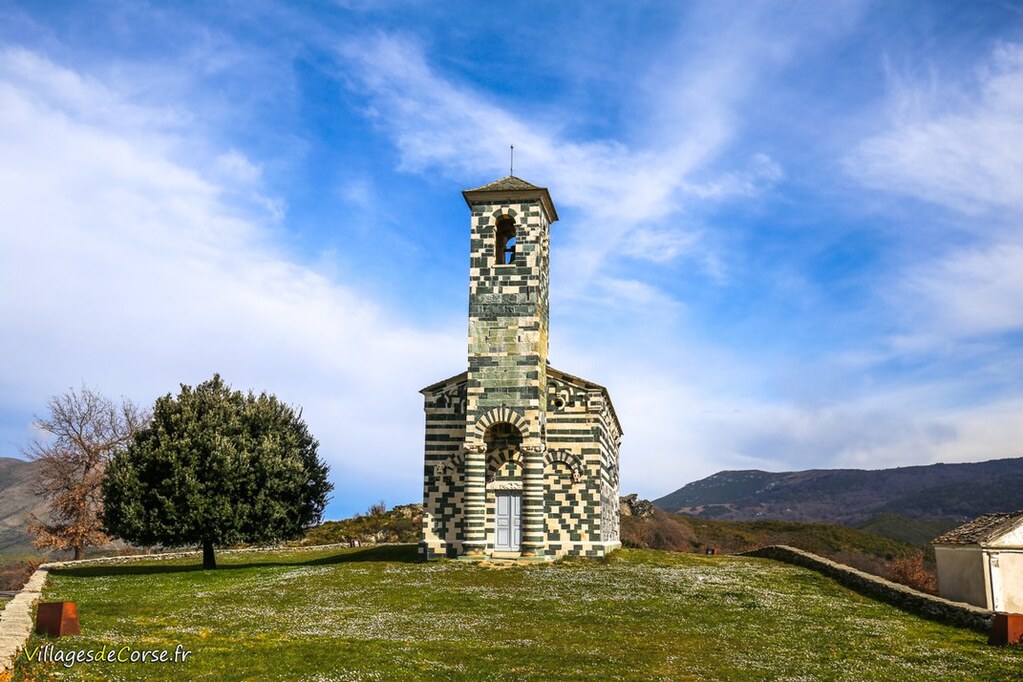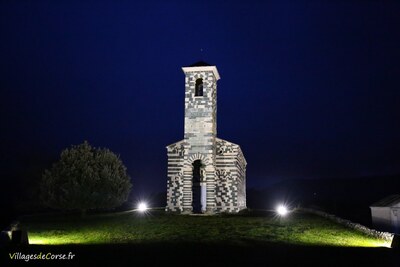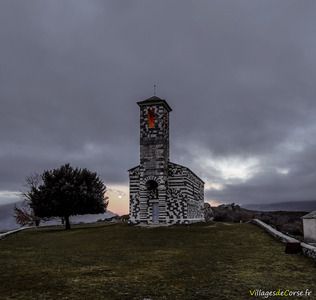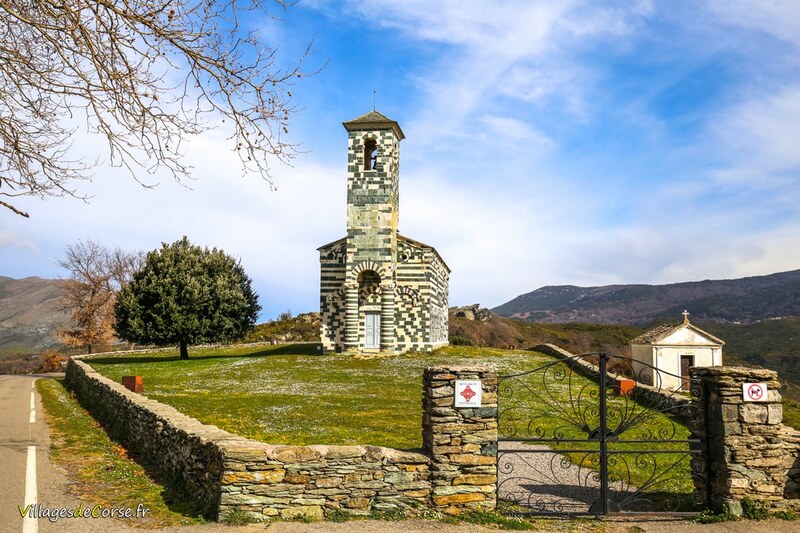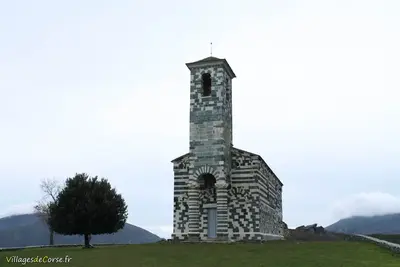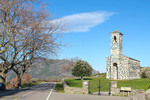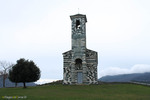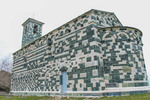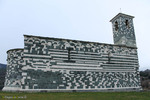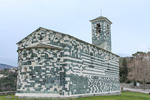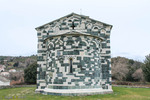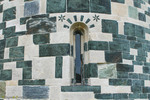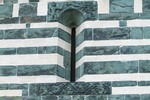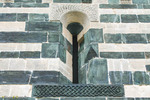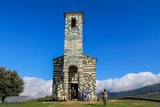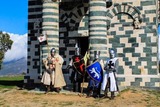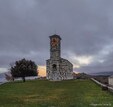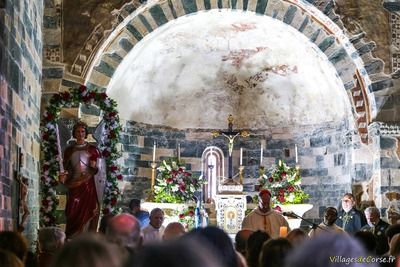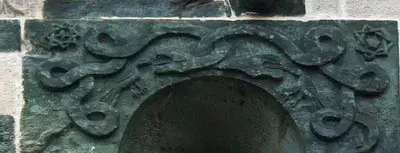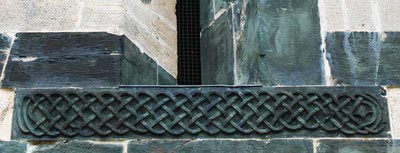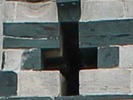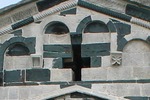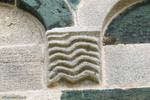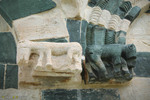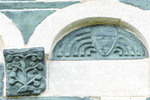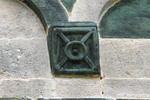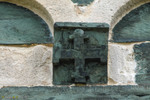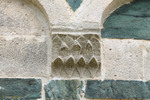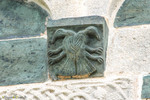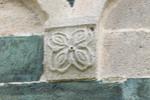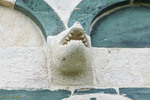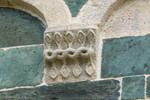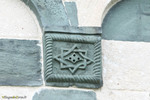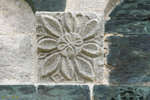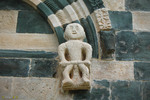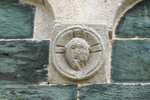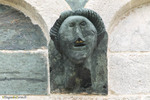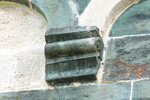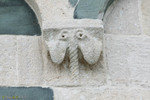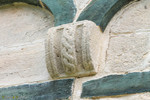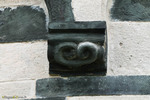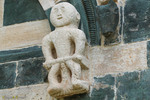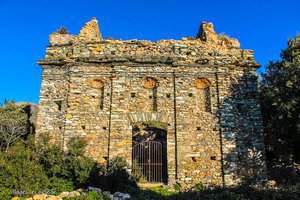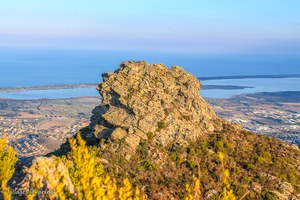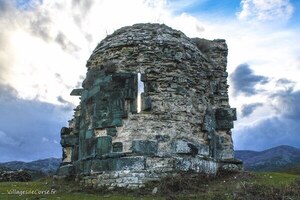Church of Saint-Michel de Murato
One of Corsica's most famous churches
Built in the 12th century, the Church of Saint-Michel in Murato - San Michele di Muratu - is one of Corsica's most emblematic religious monuments. Famous far beyond the Mediterranean, and mentioned in the stories of Prosper Mérimée, it attracts over a hundred thousand visitors every year.
The building is of Romanesque architecture with a Pisan style, as evidenced by its two-tone facades of rectangular green and white stone. The green stones are made of local serpentine(chlorite) from the Bevinco river, which flows through the village, while the white stones are made of limestone from Saint-Florent.
In 1839, Prosper Mérimée, on an inspection trip to Corsica, described it as "the most elegant and the prettiest he had seen in Corsica". One year later, in 1840, it was listed as a Monument Historique.
Saint-Michel festival on May 8 in Murato - Procession
May 8 is the village of Murato's patron saint's day, celebrating theappearance of the Archangel Saint-Michel on Mont Gargan in 492.
Also a public holiday to commemorate theArmistice of May 8, 1945, this date brings together the people of Murato and many inhabitants of surrounding villages every year. The day begins with a moment of remembrance at the war memorial in the square of the Annonciation parish church, beforethe procession on foot to the church of Saint-Michel. A solemn mass is celebrated there, often presided over by theBishop of Corsica - Mgr de Germay in 2015 - or Cardinal Bustillo in 2024.
This lively tradition continues throughout the day, with an atmosphere that's both religious and convivial: refreshments, food stalls and games for children punctuate the festive day. The event also marks the renewal of spring and thearrival of fine weather, in a spirit of sharing and popular fervor.
The official liturgical feast of Saint-Michel is celebrated on September 29.
Visit the church of Saint-Michel de Murato (San Michele di Muratu)
Listed as a historic monument, thechurch of Saint-Michel de Murato is open to visitors from May to November. Situated on the heights of the village, it offers an exceptional panorama of the Nebbio plain and the Gulf of Saint-Florent. You can visit the church on your own or with an audioguide to discover all its secrets.
Tour prices
| Tour type | Price | Conditions |
|---|---|---|
| Self-guided tour | 2 € | Per adult |
| Self-guided tour (group) | 1,50 € | For groups of 12 or more |
| Children | Free | Under 12 |
| Tour + audioguide | 5 € | Individual price |
| Audioguide only | 3 € | On-site rental |
The self-guided tour lets you admire the green and white Pisan-style stones at your own pace, while the audio guide immerses you in the fascinating history of San Michele di Muratu: its medieval construction, its sculpted symbols and its place in Corsica's religious heritage.
The context of the 11th and 12th centuries
Corsica was emerging from centuries of Saracen offensives, forcing populations to leave the coast for mountainous regions. Aided by Charlemagne on several occasions, then by a Genoese and Pisan alliance. Pope Gregory VII initiated the Piève system and asked the bishop of Pisa to set up administrative, religious and judicial institutions, building churches, bridges and harbors, and to give local populations more means to defend themselves. Saint-Michel became part of the Piévanie of Bevinco, and the diocese of Nebbiu. Corsica enjoyed 2 centuries of prosperity, the"Pax Pisana".
Built in the 12th century
Ordered by the lords of Petr'a l'Arreta, its foundation is estimated to have taken place between 1130 and 1140, in two stages according to the written records, first with the Nave, then with the porch belfry. Legend has it that it was built in one night by angels. It is one of the oldest churches on the island, and its state of preservation is also the result of repeated renovations, including the raising of the bell tower in 1855 by Achille Murati, whose grandfather was an army chief under Pascal Paoli.
Saint-Michel stands out not only for its age and typicality, but also for its special location, at the center of a large walled plot overlooking the Gulf of Saint Florent and facing the village of Murato.
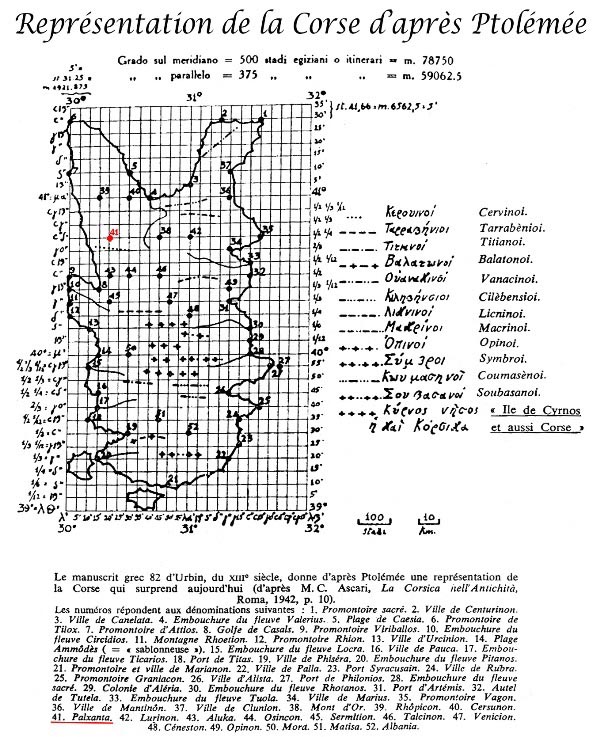
Building structure
Saint-Michel's external structure comprises a nave, a choir and a semi-circular, hemicycle-shaped apse. The bell tower rests on 2 cylindrical columns. The roof is made of green "lauzes", a typical island roofing technique, and the wooden framework is visible.
On the semi-circular apse on the east facade, a cross-shaped dormer catches the light of the rising sun - photo.
The polychrome Pisan-style facades feature five mullioned windows, including one on the hemicycle wall, and modillions around the perimeter of the building. The polychromy of the walls is very similar to that of the Chapel of the Holy Trinity in Aregno, dating from the same period.
The interior is adorned with mural frescoes, some of which have been erased by time. An oculus stands on the west entrance façade.
Lintel of Saint-Michel
The lintel of Saint-Michel was struck by lightning in 1969 and has since been restored. It depicts two birds, two peacocks with feathers studded with stones, each pulling the ear of a man placed in the center, holding them by one leg.
Archivolt sculptures and interpretation
The archivolts of the mullion windows - carved in serpentine and limestone - seem to depict biblical scenes, sometimes mixed with a pagan heritage. In the context of the 12th century, stonemasons were still transmitting very ancient motifs - inherited from the Greco-Roman or even Celto-Mediterranean world - but reinterpreting them in the light of Christianity.
Noah and the vine after the flood
In the Bible, after the Flood (Genesis 9:20-21), Noah planted a vineyard, drank the wine and got drunk. In Christian tradition, he is considered mankind's first winemaker.
On this sculpture, the vine is clearly the central motif of the relief, symbolizing the rebirth of life and man's filiation with the earth after the destruction of the waters. Noah is on the right with a pruning hook to harvest the grapes, and on the left we see the Angel blessing the vine.
Symbolism of the archivolt's intertwined snakes
The archivolt features two intertwined snakes, reminiscent of the Caduceus of Mercury (or Hermes), an ancient symbol ofcosmic balance, healing and mediation between opposing forces. In the medieval reading, these snakes are no longer pagan: they become signs of Christian dualism between good and evil, life and death.
Birds, on the other hand, are often symbols of heaven and spirit. At the ends, two six-pointed stars recall the cosmos and the perfection of creation.
The victorious Lamb in the Apocalypse
This frieze represents thevictorious Lamb of the Apocalypse, symbolizing Christ's triumph over Evil. Between two ferocious beasts, the Lamb remains upright and peaceful, an image of redemptive sacrifice and spiritual victory.
Temptation scene
This depiction clearly evokes the biblical scene in the Garden of Eden, when Eve is tempted by the serpent to take the forbidden fruit.
It also symbolizes mankind in the face of the serpent wrapped around the tree of knowledge. The naked figure, hand raised, hesitates between obeying God or giving in to the cunning of Evil.
Frieze with 12 interlaced circles
At first glance, this geometrically repetitive frieze seems purely ornamental... but it's not. It belongs to the universal symbolic language used by 12th-century master sculptors, in which each shape expresses a spiritual, cosmic or theological idea.
Modillions
Saint-Michel features a large number of modillions all around the church. These modillions are intended to be simple and eloquent, without superficiality, so as to be accessible to as many people as possible. Among other things, they evoke justice, law and religious values, through representations of objects, characters and animals. On the front of the house, there are two figures apparently representing the law, one with a scroll, the other wearing a robe, as well as a parchment on the south facade, which features two birds back to back, a woman's portrait, stars at different peaks, a shape reminiscent of infinity or the universe, and a triton symbolizing the sin of lust.
The tomb
Below Saint-Michel stands a tomb inscribed with the names of Achilles Murati and Romanus Murati, historical figures of the village. Achilles Murati was Pascal Paoli's lieutenant.
CRDP broadcast on Saint-Michel en corse
Some interesting sources
Here are a few interesting and relevant links for further reading: the Imagina Muratu association provides additional information, as doesElisabeth Pardon 's blog on the sculptures, modillions and motifs in the Church of Saint-Michel.
